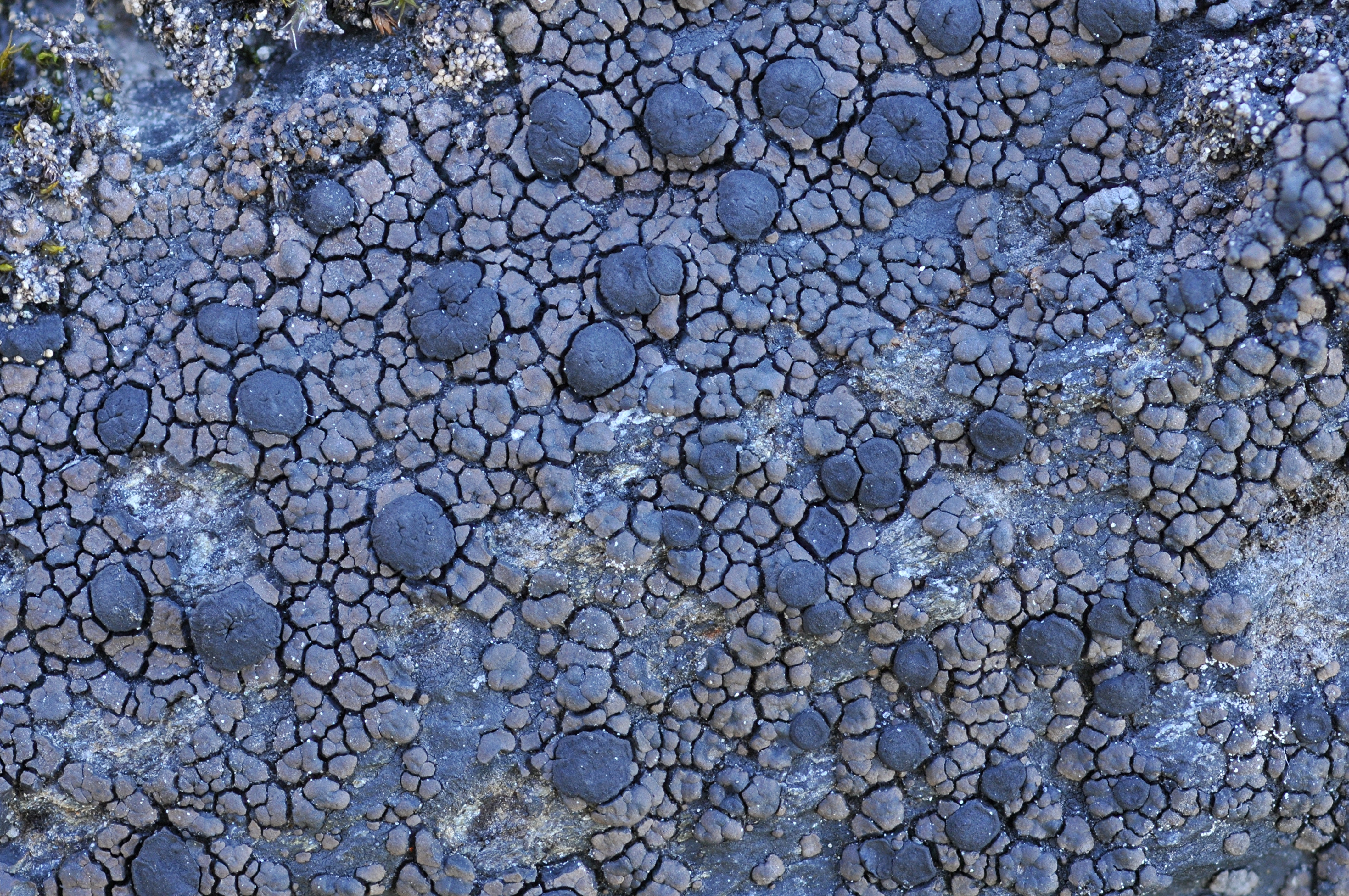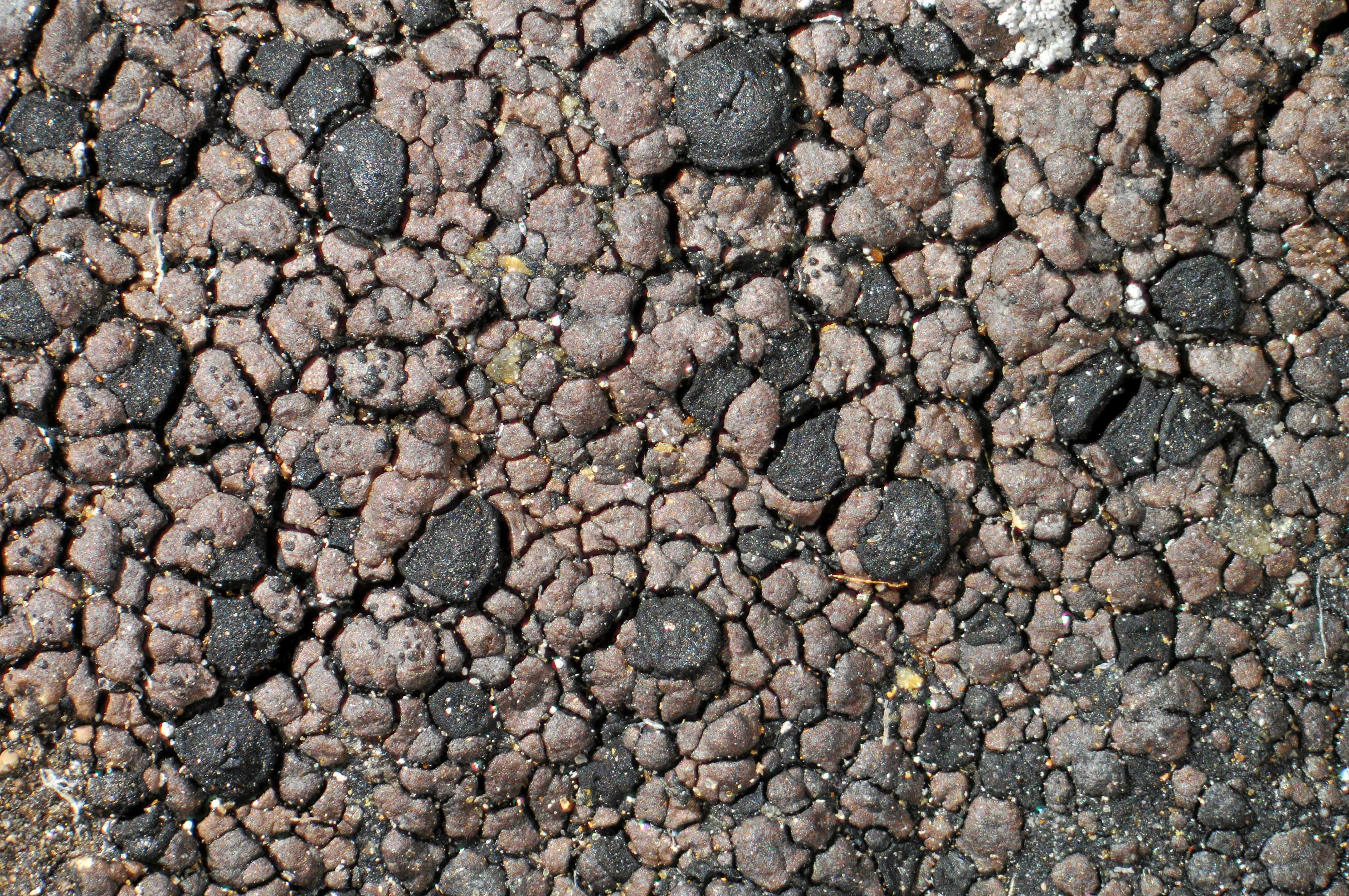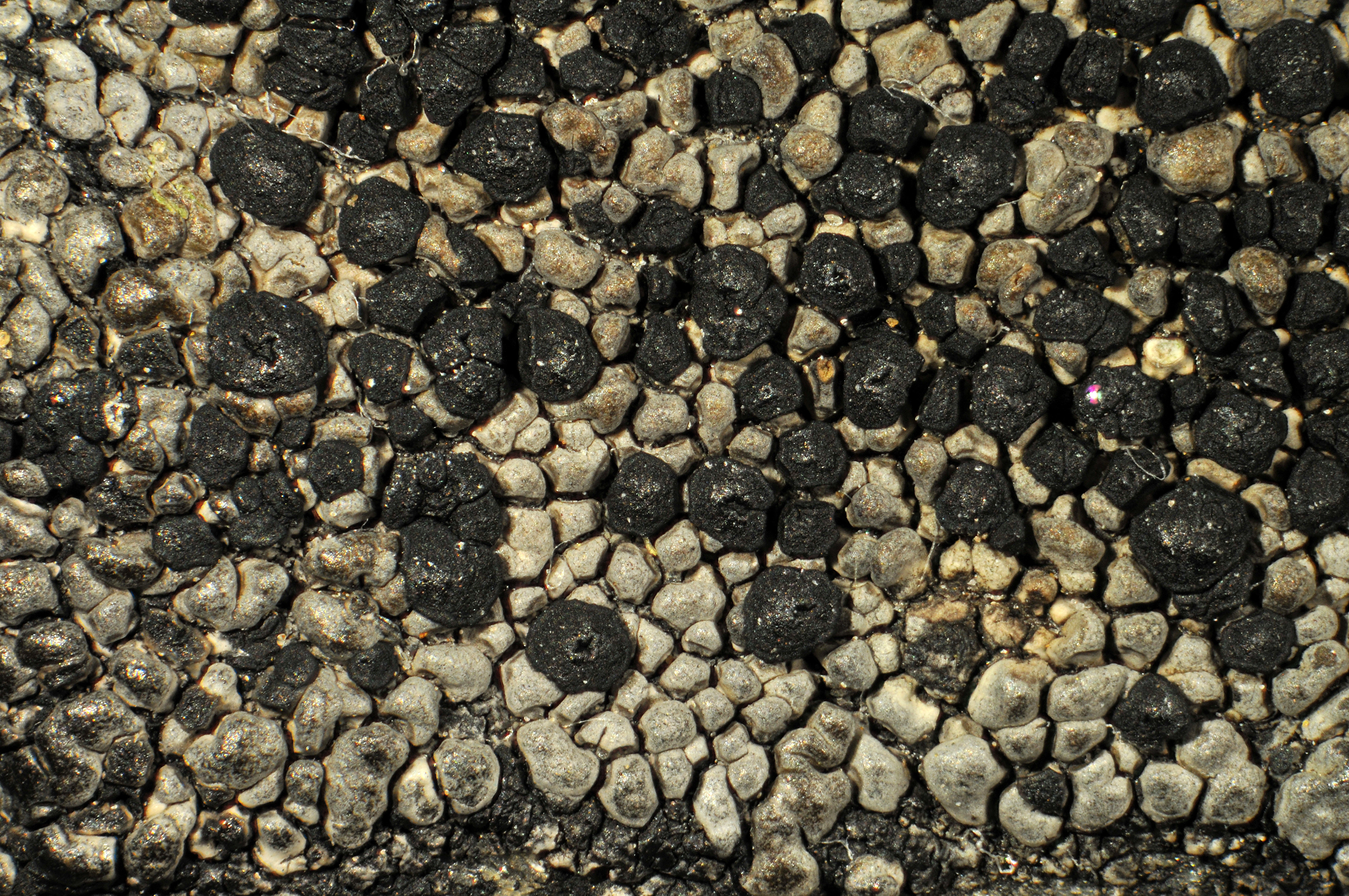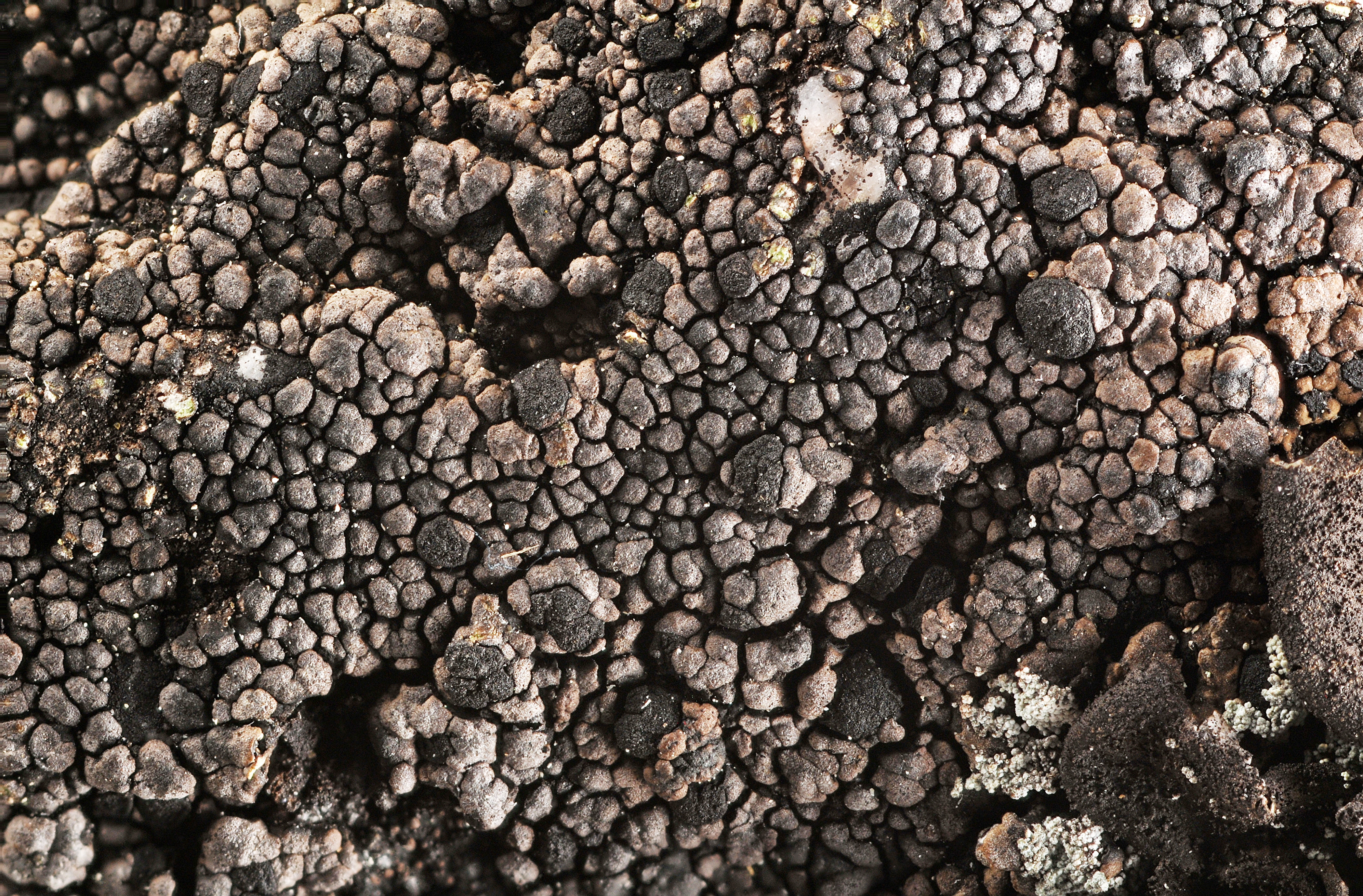Rhizocarpon jemtlandicum
- Innhold
- Morphology
- Chemistry
- Habitat
- Comment
- Look-alikes
Morphology
Thallus areolate, up to 10 cm diam.; hypothallus usually well developed, black; areolae up to 1.5 mm diam., dark brown, often with a faintly greyish tinge, dull, usually contiguous, irregularly rounded or angular, plane to weakly convex; medulla KI–. – Apothecia up to 1.5 mm diam., black, epruinose, orbicular, remaining more or less plane or becoming weakly convex, with a thick and persistent margin; excipulum brownish black in the rim, inner part paler brown, K–, containing crystals dissolving in K; hypothecium brownish black, K–; hymenium colourless; epihymenium olivaceous green, K– (turning more brightly green), containing crystals dissolving in K; ascospores 8 per ascus, 1-septate, soon becoming dark green or brown, 25–30 × 13–15 µm. – Conidiomata not seen.
Chemistry
Stictic acid; spot tests: medulla PD+ orange, K+ yellow, C–.
Habitat
On siliceous rock in open situations. Common in the mountains, more rare in the lowlands.
Comment
The species resembles R. copelandii, but that species usually forms somewhat smaller, more convex, and more scattered areolae which contain either stictic acid or norstictic acid. R. badioatrum differs by the reddish brown, K+ red epithecium which does not contain crystals (polarized light!).




